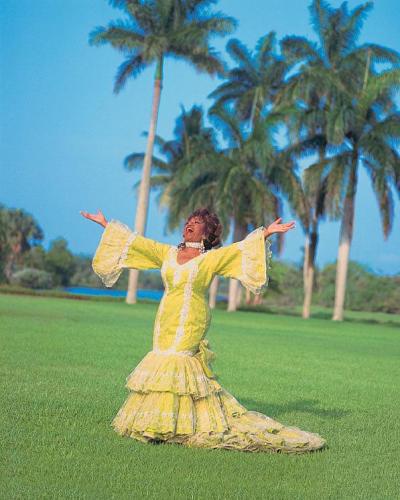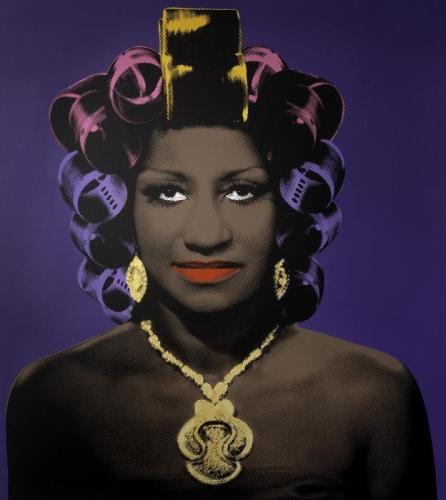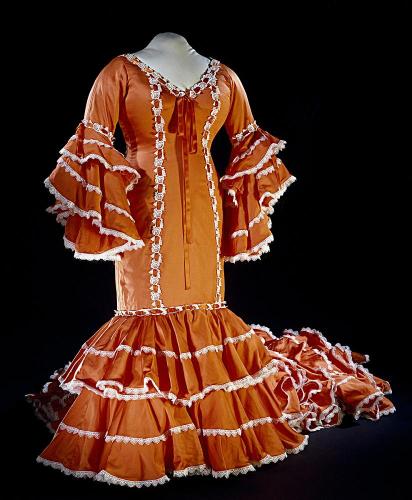
“¡Yo soy de Cuba la Voz, Guantanamera!” Celia Cruz. National Portrait Gallery, Smithsonian Institution; acquisition made possible through the Smithsonian Latino Initiatives Pool, administered by the Smithsonian Latino Center. © 1994, Alexis Rodriguez-Duarte
During a career that lasted more than 60 years, Celia Cruz helped popularize salsa music in the United States. By celebrating her Cuban culture, she also helped Afro-Latino Americans embrace their own heritage.
As a lead singer of Cuban orchestra La Sonora Matancera, Cruz performed across Latin America. Cruz arrived in the U.S. on November 20, 1961. She became one of few women to succeed in the male-dominated world of salsa music. Salsa was a music style that arose in 1960s and 1970s New York. It blended Cuban and other Afro-Latino musical traditions. Cruz performed salsa in Spanish, celebrating her Afro-Latino culture during the U.S. Civil Rights movement.
Melinda Machado, director our National Museum of American History's office of public affairs, remembers listening to Cruz's music as a child. She wrote that her Cuban father, "was reluctant to talk about Cuba, a place he knew he'd never return to. So, I learned about Cuba from Celia Cruz."

"Celia con Rolos" by Tony Peralta. Anacostia Community Museum, Smithsonian Institution, 2017.3.1
Over her career, Cruz recorded more than 70 albums and songs, many of which went gold or platinum. She won five Grammy Awards. In 1994, she was awarded the National Medal of the Arts. People couldn't forget her powerful voice, her larger-than-life personality, and her elaborate stage costumes.

Cuban Rumba Dress worn by Celia Cruz. National Museum of American History. Gift of Celia Cruz.
Several of those costumes are now part of our Smithsonian collections. You can find her bata cubana, or Cuban Rumba Dress, and a pair of her custom-made shoes in our National Museum of American History. Our National Museum of African American History and Culture has this dress she wore in the 1970s. You can find a pop-art portrait of Cruz at our Anacostia Community Museum, three portraits at our National Portrait Gallery, and her stamp in in our National Postal Museum.
Cruz is one of four women featured in our miniseries about women who shaped American history. In this video, Mincy, a student, speaks about Cruz with Ariana A. Curtis, curator at the Smithsonian's National Museum of African American History and Culture.
Mincy says, "Having these incredible people like Celia Cruz embrace their cultures and express themselves...it can change the nation."
Watch their video to learn more about Celia Cruz.
Celia Cruz celebrated her Cuban American identity as one of the first women salsa singers. Mincy, a student, speaks with Ariana A. Curtis, curator at our National Museum of African American History and Culture.